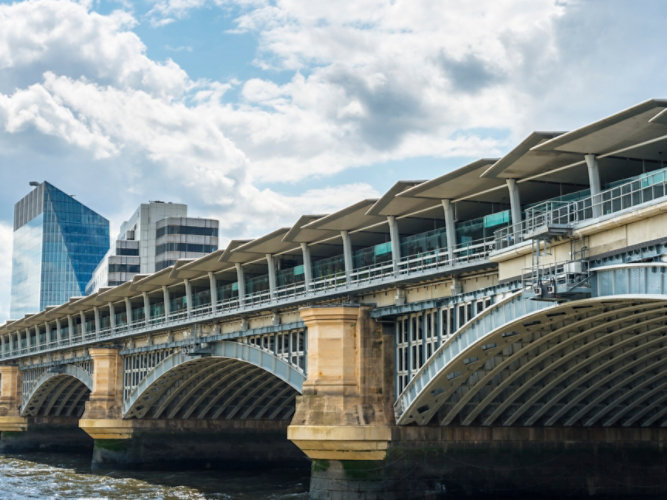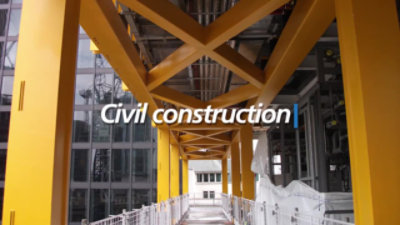Case Study
Bridging the Gap Between Old and New
Sherwin-Williams system provides corrosion protection for old and new steelwork
The task of protecting the existing Blackfriars rail bridge and the new station that runs along its length presented a specific challenge for Sherwin-Williams in that a common protective coating system for old and new steelwork was preferred.

With the River Thames below, inherent issues of dampness and humidity meant that the choice of coating would be of particular importance, because Network Rail specified a minimum service life of 25 years to first major maintenance.
The roof of the new station was covered with 4,400 photovoltaic panels, providing up to half of the energy needed to run the railway station below and making it the world’s largest solar-powered bridge. First Capital Connect, which manages Blackfriars Station, expects the panels to cut the station’s carbon emissions by an estimated 511 tonnes a year, further reducing the carbon footprint of its train routes to the south east of England. As a major advertisement for London’s efforts to become a sustainable city, with tourists and workers viewing the landmark as they enter the capital, the project was of paramount importance.
System
Because of its success in the repainting of the Forth and Tay Rail bridges and all the new steelwork for Leeds station, a glass flake epoxy system was chosen. The main contractor, Balfour Beatty, selected the Severfield Group to supply and fabricate the steelwork for the new station and Pyeroy to repaint the existing bridge. Both sub-contractors selected Sherwin-Williams Protective & Marine Coatings EMEAI as their preferred paint supplier.
The existing paintwork on the rail bridge was removed by abrasive blast-cleaning. The three-coat repainting system comprised; Macropoxy L674 Blast Primer at 25 μm minimum dry film thickness (mdft), Macropoxy M922 Glass Flake Epoxy Intermediate at 400μm mdft and Acrolon C137V2 Special Finish at 50 μm mdft. A stripe coat of Macropoxy M922 at 200 μm mdft was applied between coats 1 and 2.
All the new steelwork that formed the station canopy and the entrance/ticket halls located at each end of the bridge were coated with the glass flake epoxy protective system. In total more than 60,000 square metres of new and old iron and steel was coated. The benefits to customers using this system for the bridge and highways sector comes in terms of labour saving costs, lower energy usage and volumes of paint required. In addition, the higher volume solids coating system meant that fewer volatile organic compounds (VOCs) were emitted during the process.
Discover More
Industry Expertise and Innovation
See how we help customers find customised solutions for their project and application challenges.
Technical Service
We're here to ensure your entire project is running smoothly and efficiently.
LEARN MOREProduct Lookup
Find out more about our innovative coatings for a variety of industries.
FIND A PRODUCT



